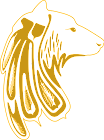When Healing Is More Than Just Treating Symptoms
At a time when modern medicine is increasingly opening up to holistic approaches, the medical traditions of Native Americans are gaining new attention. These ancient practices do not define health as the mere absence of disease, but as a harmonious balance between body, mind, environment, and community.
The Philosophical Foundation: Holistic Healing
The Four Dimensions of Health
In traditional Indigenous medicine, health exists on four levels:
- Physical: Proper functioning of all organs and systems
- Mental: Balance of thoughts and emotions
- Spiritual: Connection to creation and higher powers
- Social: Harmony within the community
The Medicine Wheel Approach
The medicine wheel symbolizes this holistic approach:
- Four directions with different qualities
- Cycles of life and nature
- Balance as the key to health
Medicinal Plants: Nature’s Pharmacy
Important medicinal herbs and their uses
Echinacea (Coneflower)
- Traditional use: Immune support, wound healing
- Modern confirmation: Immune system activation
- Cultural significance: Known as “snake root” for treating bites
Comfrey (Symphytum)
- Application: Bone healing, joint pain
- Traditional preparation: Poultices, salves
- Warning: Today recommended for external use only
Sage (White Sage)
- Ritual use: Cleansing, prayers
- Medicinal: Anti-inflammatory, antimicrobial
- Spiritual: Smudging for space purification
Yerba Santa (“Holy Herb”)
- Tradition: Respiratory conditions
- California tribes: Asthma, bronchitis
- Modern research: Expectorant properties
Shamanic Healing Rituals: Bridges Between Worlds
The Role of the Medicine Man/Woman
Traditional healers combined multiple roles:
- Diagnostician with intuitive abilities
- Plant expert with deep botanical knowledge
- Ritual specialist for ceremonies
- Psychologist and counselor
Key Healing Ceremonies
Sweat Lodge Ceremony (Inipi)
- Purpose: Physical and spiritual purification
- Process: Four rounds with prayers and songs
- Effects: Detoxification, stress relief, clarity
Vision Quest
- Goal: Finding life direction and healing
- Duration: Several days in solitary nature
- Preparation: Fasting, prayers, purification
Drum Healing
- Rhythm: Heartbeat-like frequencies
- Effect: Trance states, stress reduction
- Spiritual: Connection to the spirit world
Diagnostic Methods: Seeing the Invisible
Intuitive Diagnostics
- Body reading: Changes in skin, eyes, posture
- Dream interpretation: Messages from the unconscious
- Nature signs: Observing animals and plants
Practical Examinations
- Pulse diagnosis (similar to TCM)
- Urine analysis
- Feeling body energy
Spiritual Concepts of Illness
Causes of Illness
According to traditional understanding, illnesses arise from:
- Imbalance within the medicine wheel
- Spiritual blockages or transgressions
- Loss of the soul
- Evil spirits or negative energies
Treatment Approaches
- Herbal medicine for physical symptoms
- Rituals for spiritual cleansing
- Counseling for mental processing
- Community involvement for social healing
Modern Integration and Research
Scientific Confirmation
Many traditional healing methods are being researched today:
- Anti-inflammatory effect of willow bark (precursor to aspirin)
- Pain relief from cayenne pepper (capsaicin)
- Calming effect of California poppy
Integrative Medicine Today
- Clinics including traditional healers
- Research projects on herbal medicine
- Culturally sensitive therapy programs
Ethical Questions and Cultural Appropriation
Respectful Use of Traditional Knowledge
- Acknowledgment of cultural origins
- Collaboration with Indigenous communities
- Reciprocity for shared knowledge
The Problem of Commercialization
- Patents on traditional medicinal plants
- Exploitation of Indigenous knowledge
- Loss of quality through mass production
Practical Applications for Modern Lifestyles
Simple Integration into Daily Life
- Herbal teas instead of pharmaceutical products
- Mindfulness practice based on medicine wheel principles
- Connecting with nature as health prevention
Contraindications and Warnings
- Professional guidance for serious illnesses
- Respectful dosage of medicinal plants
- Cultural sensitivity in rituals
Case Study: Healing Diabetes
Traditional vs. modern approaches
Problem: Diabetes epidemic in Indigenous communities
Traditional solution:
- Return to traditional diets
- Physical activity in nature
- Finding spiritual balance
Results: Significant improvements in communities returning to traditional ways
Future Perspectives
Revival of traditional knowledge
- Training young healers
- Creating digital archives of knowledge
- Promoting intercultural dialogue
Research Potential
- Analyzing unexplored plants
- Studying holistic mechanisms of action
- Developing integrative models
Conclusion: Wisdom for Holistic Health
The medical traditions of Native Americans offer us precious insights into a healing practice that sees the human being as a whole. In an age of specialization and fragmentation, these ancient practices remind us of a simple truth: True healing requires balance – between tradition and modernity, between science and spirituality, between the individual and the community.
Further Resources:
- National Library of Medicine: Traditional medicinal plants
- Association of American Indian Physicians
- Tribal Health Research Initiatives
